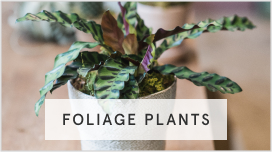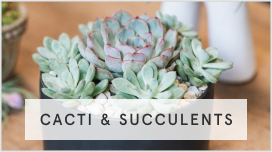If you love a good cup of coffee on a bleary-eyed morning, you know that there’s nothing like that rich aroma to perk you up and get you ready for the day. Surprisingly this part of your daily routine also produces a significant amount of kitchen waste — that may actually be quite useful if you’ve got a green thumb. Coffee grounds are the culprits in question, and they can do wonders for your houseplants.
What makes them so special? It’s all down to their unique composition. They’re packed with the essential nutrients that plants require to thrive, including nitrogen, potassium, calcium, phosphorus, iron, chromium, and magnesium. Used outside, they can even draw beneficial worms to your garden and absorb contaminating heavy metals. In the home, though, they’ve proven to be a fantastic addition to a well-rounded maintenance plan for houseplants. Here’s everything you should know.
Benefits of Coffee Grounds for Houseplants
The nutrient content alone makes coffee grounds a vital addition to a robust plant care program. In particular, nitrogen is vital because it promotes more substantial, green leaf growth. On average, coffee grounds contain about 1.45% to 2% nitrogen. They also contain approximately 0.6% potassium, which is vital for stem growth and the ability to withstand general environmental stressors. With .06% phosphorus content, coffee grounds also support healthy roots and flower development.
Houseplants That Love Coffee Grounds
Keep in mind that not all types of houseplants favor coffee grounds. Although not highly so, the grounds are acidic. They also retain moisture in the soil. While some plants certainly thrive in such environments, others may suffer stress and experience signs of failure. Among the plants that thrive when treated with a healthy dose of coffee grounds are golden pothos, African violets, snake plants, spider plants, jade plants, philodendron, peace lilies, and miniature roses.
How to Use Coffee Grounds on Indoor Plants
You don’t want to make the mistake of directly applying the coffee grounds to the soil. They retain moisture so efficiently that they can actually harm your indoor plants if applied that way. Issues like root rot and swelling can occur, causing discoloration and eventual failure. Instead, make a fertilizing and nourishing “tea” for your houseplants.
The process is easy: just prepare another pot of coffee using the same batch of grounds from the first pot. They’re much weaker by now, making them a milder and gentler addition to your houseplants. Avoid making a fresh pot of coffee — the acidity levels are simply too harsh for most indoor plants to tolerate. Allow this newly concocted tea blend to cool down before adding it to the soil.
If you prefer, you can place the used grounds in a new container and add water. Let this mixture steep for several hours, then strain and water the soil. To ensure that you don’t overdo it with the coffee grounds, aim to fertilize your houseplants with them at least once every week to 10 days. You don’t want to over-nourish your plants, either, but this schedule allows a happy middle ground that should keep them in good condition.
What if you’re repotting your indoor plants? Coffee grounds can be very useful in that situation, too. Just mix about a quarter of a cup for every four cups of your potting soil of choice. This transforms the grounds into a valuable slow-release fertilizer that will gently and efficiently nourish your houseplant without increasing the risk of added water retention or nutrient overload.
The next time you brew yourself a fresh cup of coffee, keep in mind that those spent grounds don’t need to go straight into the trash! If you have houseplants, they can easily be repurposed and contribute to their longevity and beauty.













